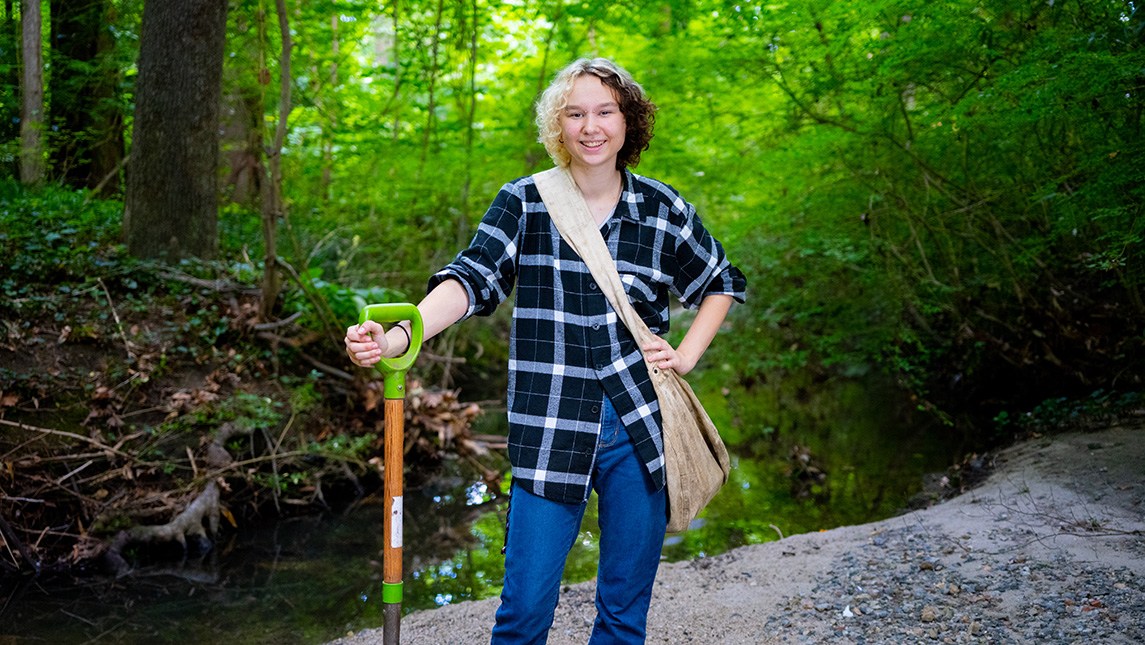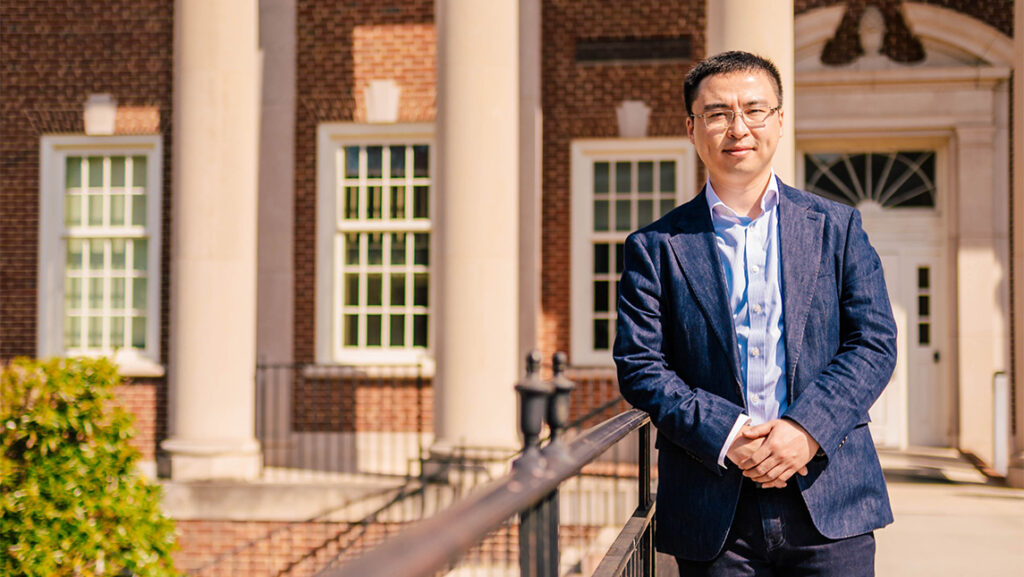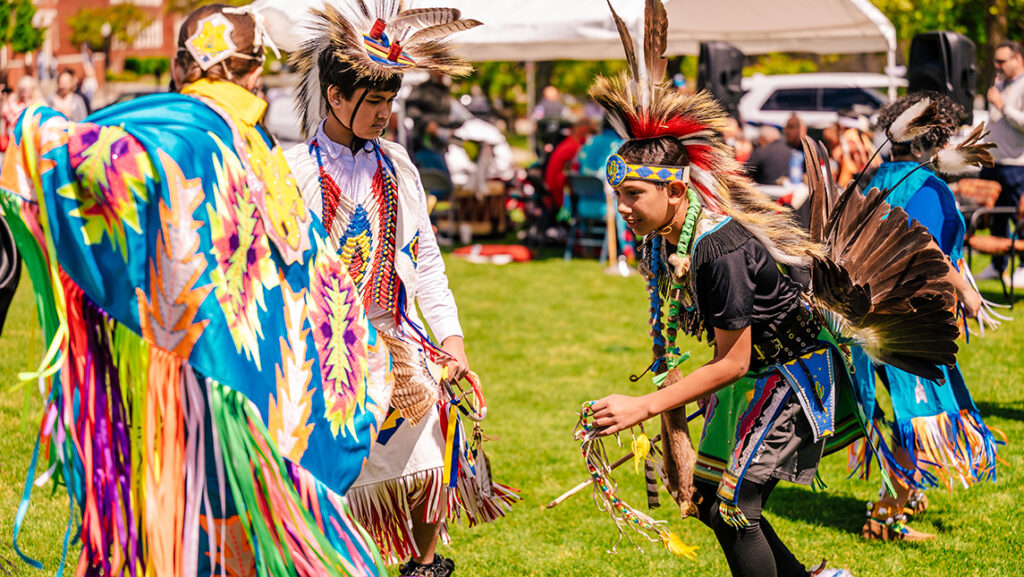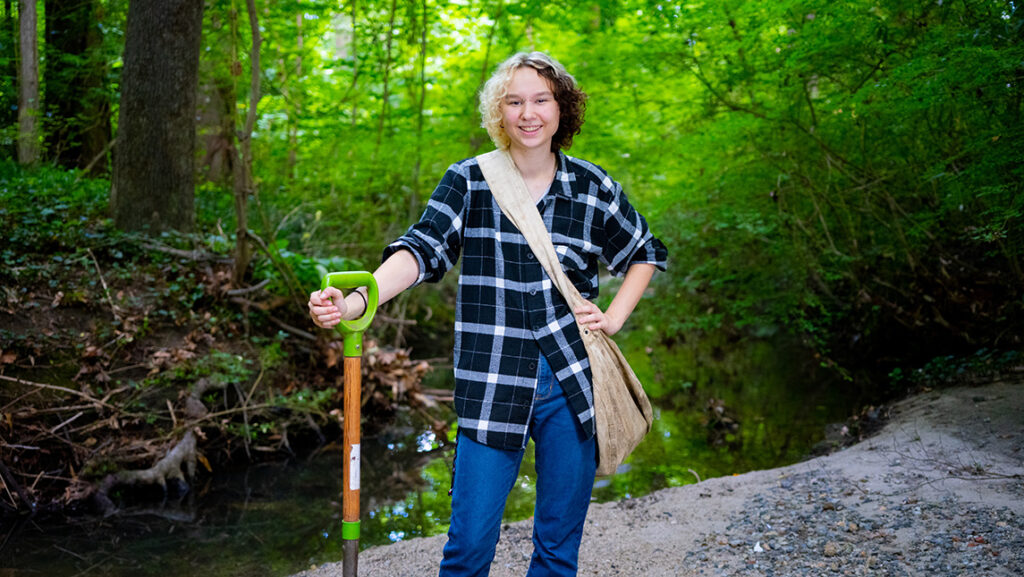
Leo Ivey’s love of libraries has led him on an unexpected path, from a college education to field work – and in some of the most beautiful parts of North Carolina. Growing up, Ivey says school was challenging for him, due to a combination of factors that were beyond his control.
While Ivey says he didn’t picture himself in college, he loved learning and could be found devouring books in his high school library. He spent so much time there that the librarian couldn’t help but notice something special in this “avid reader” and encouraged him to apply to college. Ivey also had the ACT test scores to support his application.
“She was convinced that I would love college – and she was right,” Ivey says.
Since being accepted to UNCG, the junior biology major has soared. He is studying the skulls and bone density of small mammals during winter under the direction of Dr. Bryan McLean, an assistant professor in the Department of Biology.
Winter can be a tough time for many organisms as they navigate conserving their energy in bleak conditions and periods of lower food resources. Some mammals with high metabolisms, Ivey says, have developed an interesting strategy to withstand winter – for several cold weather months they reabsorb some of their brain’s mass in a process called “Dehnel’s phenomenon.”
“This might seem counterintuitive,” Ivey says. “You would think you want to preserve your brain at all costs. But for the organisms that this primarily affects – shrews and weasels – all you really need to do during the winter is sleep and eat.”
The brain is also one of the body’s most energetically expensive organs, so any energy savings here go a long way towards maintaining positive energy balance, according to McLean.
While Dehnel’s phenomenon has been documented in a few species, mostly in Eurasia, not much is known about how small mammals’ skulls may be shifting in the Appalachian region. To investigate this topic, Ivey is working in McLean’s laboratory to collect mice and shrew from a variety of locations in North Carolina’s neck of the woods, including Pisgah National Forest, Nantahala National Forest, and Mount Mitchell State Park.
During field work, Ivey was immediately captivated by shews, which he says are small – weighing only three to 30 grams – but mighty.
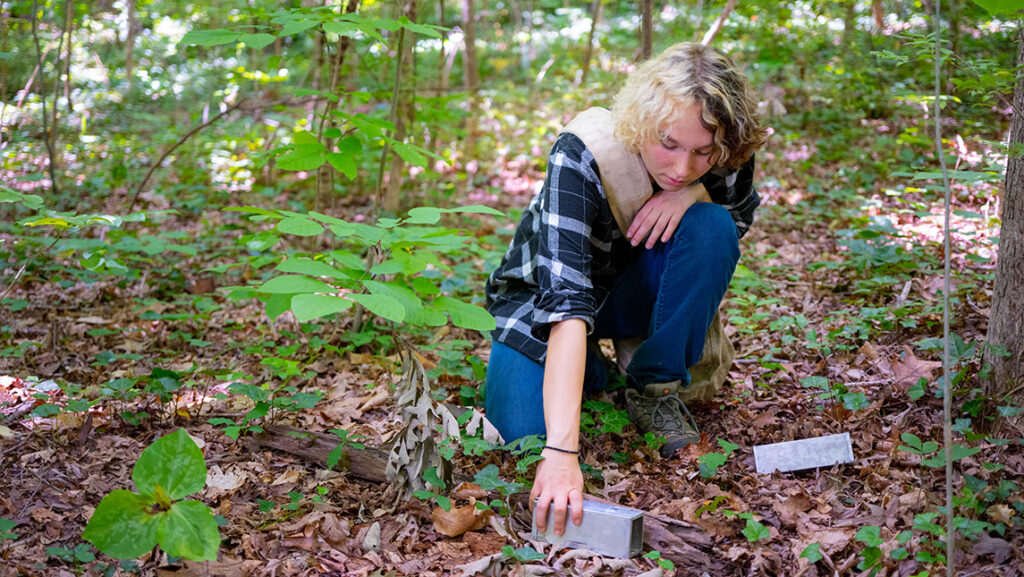
“They are as feisty as they are delicate and have a tenacity for survival that is admirable, considering how they are a prey species for most everything that’s bigger than them – which is most everything,” Ivey says.
Back at UNCG – with the shrews and mice in hand – their team uses the micro-CT scanner at the Joint School of Nanoscience and Nanoengineering to analyze these small mammals’ skull shapes and brain sizes across seasons to test for Dhenel’s phenomenon.
Throughout the research process, Ivey says McLean has taught him about the importance of flexibility and creativity when approaching unknown problems.
“His persistence, guidance, and patience have taught me invaluable lessons about the realities of research,” he says.
Ivey says he, too, hopes to be a mentor for students who may not be able to see themselves in college, but have the potential to succeed. He plans to pursue graduate education to continue his line of research.
“My hope is that I can reach a level where I can create opportunities for underprivileged students coming from backgrounds similar to my own and support them in their journey into higher education,” Ivey says.
Experience with the McNair Program?
“I have always found myself to be more focused and driven when I am surrounded by like-minded and hardworking people, and there is no greater gathering of these folks than in the McNair program,” Ivey says.
His favorite place on campus?
Perhaps unsurprisingly, Ivey can often be found on the fifth floor of Jackson Library in a Goldilocks spot that’s “not too quiet” like the upper floors and “not too noisy” like the lower floors. Plus, the fifth floor has a hidden benefit for this budding scientist.
“There’s a section of books on small mammals smack dab in the middle, so when I need a break from coursework, all I have to do is meander around the stacks and find a new book on shrews,” he says.
UNCG-McNair Scholars Program
Interested in learning more about the UNCG-McNair Scholars Program?
Story by Rachel Damiani & Susan Kirby-Smith, University Communications
Photography by David Row, University Communications
